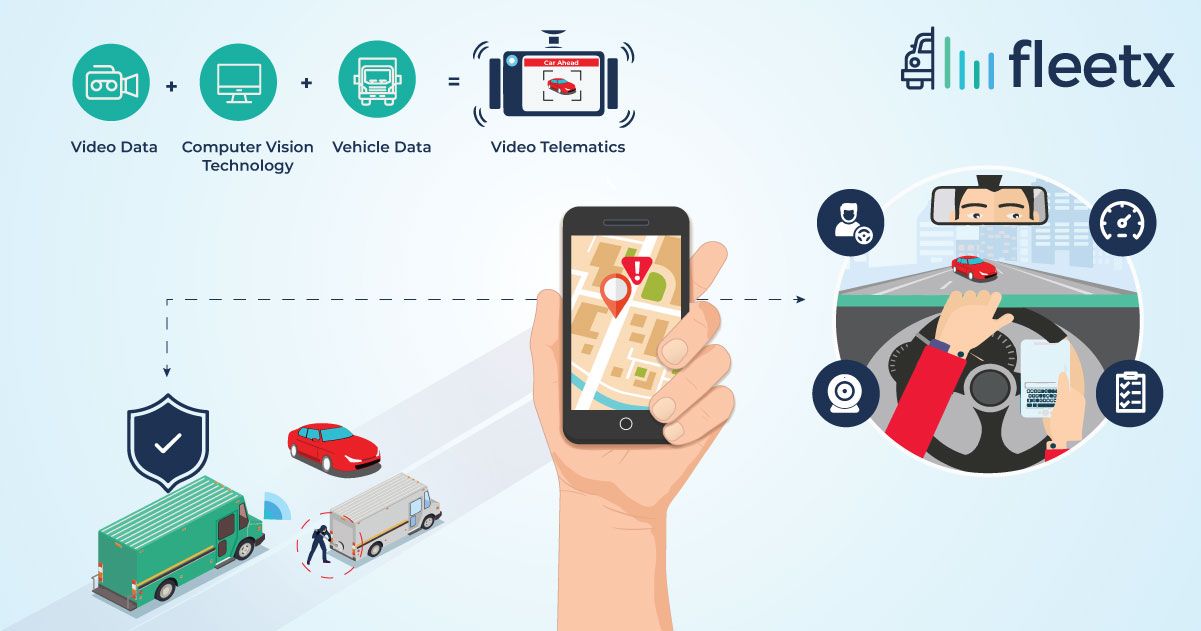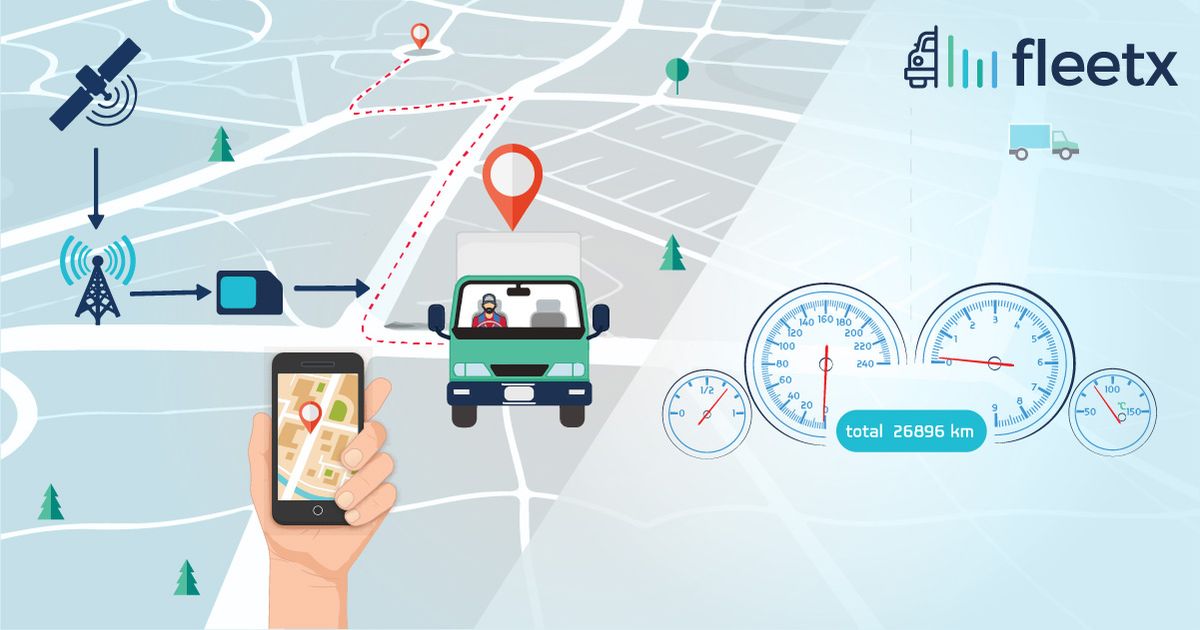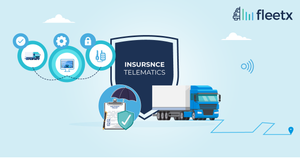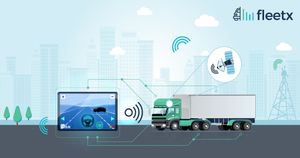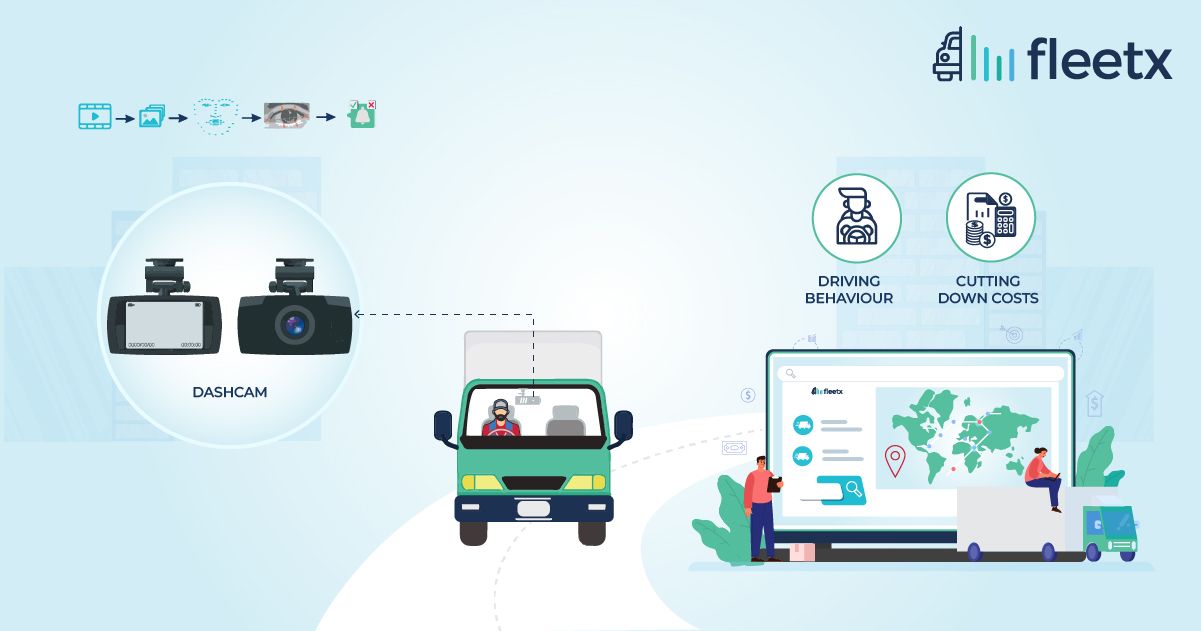
If you are a business that manages a fleet or offers fleet services for logistics & transport operations, now might be the time to invest in dashcams for your vehicles. As the name suggests, dashcams are video recording cameras fitted in the dashboard of the vehicle, and they record continuous video footage for vehicles or trucks engaged in transport operations. The need for dashcams have seen a monumental rise over the years particularly from a safety and insurance point of view.
According to a 2018 report by the World Health Organisation, India accounts for 11% of global road accidents and ranks at the top when it comes to death due to road accidents. The 2020 Road Accidents in India report by the Ministry of Road, Transport & Highways states that roughly 56.6% of all road accidents in India took place on national and state highways. Moreover, State and National highways account for 50.7% of all the people killed during road accidents. The figures are astronomically high when we consider the fact that National Highways constitute less than 5% of India’s entire road network. Lastly, the majority of the traffic on National and State highways are commercial trucks, making them and affiliated businesses vulnerable to road accidents. Thus, it becomes absolutely crucial to enhance the safety standards of fleets engaged in business operations.
Road Safety has come to the forefront of policy initiatives since the government plans for rampant expansion of the National Highways under the GatiShakti Project in order to ease movement of commercial vehicles carrying goods across the country, thus, boosting India’s transportation & logistics capability.
India’s logistics & transport sector considerably falls behind other nations primarily due to the slow pace of uptake in integrating operations with technology. Poor supply chain visibility continues to plague businesses as most of the time fleet managers have very little oversight on how drivers operate the trucks on road. The lack of transparency in operations is one of the primary causes of mishaps and accidents and even delays the process of getting assistance. Overspeeding, reckless driving, or driving under consumption are all major causes of road accidents in India but businesses fail to track or monitor them due to lack of technology integration. The lack of visual evidence of accidents often hinders the process of insurance claims or get an accurate account of the incidents.
Dashcams primarily address this very problem for businesses by being a reliable source of video evidence in such cases. In an industry with slim profit margins businesses might be a bit hesitant about installing dashcams due to the initial cost, which in their head may not justify the purpose it servers. However, they miss the larger utility and applicability that installing dashcams in their trucks would serve.
Applications of a dashcam for commercial vehicles
Using dashcams in-vehicle monitoring system can bring down collision frequency up to 60% and users have reported an 86% decrease in accident-related costs after installing dashcams in their vehicles. Although data for dashcam utility is limited in the Indian context, a report by NSTSC identified that video-based safety solutions reduce the operating cost for fleets. Combined with driver training, dashcams have reduced safety related incidents by an impressive 52%.
1. Reducing cases of false claims in case of accidents
In majority of the cases of road accidents involving commercial trucks, the blame is almost immediately implied on them. However, trucks equipped with dashcams periodically upload the footage to the server which can be used to quickly resolve such disputes and protect the driver and your asset from unnecessary hassle and claims.
2. Repurposing integration with dashcams for other uses
Equipping your vehicle with a dashcam can also be integrated with other software solutions. One such example is video telematics which offers several unique and insightful service offerings. Another such service is Driver Behaviour Monitoring Solution which helps businesses improve their vehicle safety through tracking driving behaviour and driver performance during trips.
3. Improves driver and vehicle safety
Dashcams integrated with the truck telematics system enhance transparency in operations from businesses and fleet managers. Moreover, it also improves a sense of accountability in drivers since their driving is being monitored through the dashcams both inside and outside the truck. Integration with the telematics system also helps flag instances of overspeeding, rash driving, hard braking, etc which are responsible for accidents on roads and also high wear and tear for trucks.
4. Video footages can help in training
Footages recorded via dashcams can also be a great resource for training and coaching of drivers. Moreover, it can also help businesses incentivise more responsible and efficient driving through reward systems than can make use of dashcams.
Choosing the right dashcam for your fleet
The applicability of dashcams in supply chain operations is endless and can yield greater benefits as businesses tread ahead toward more efficient and transparent operations. However, businesses need to first evaluate their use cases and requirements before making purchase decisions. If you google dashcams there will be several options available by known companies like Sony and Garmin. However, dashcams for commercial vehicles differ from those used in personal vehicles. Dashcams for commercial vehicles are more sturdy, offer large storage options and are multi-purpose. Let’s look at some of the key variables one needs to keep in mind when purchasing dashcams for their fleet.
- Camera configuration or mount - Dashcams come with different camera mounts such as front facing only, dual facing, interior and exterior dashcams. Based on your requirements and usecases you may choose the most appropriate one for your fleet.
- Storage - For commercial vehicles dashcams with higher storage are preferred due to longer routes. Dashcams with memory support up to 256GB are desirable.
- Connectivity - Ideally dashcam for commercial vehicles should come with 4G support offering cloud sync with servers. In case there is a network disruption or error while sync, the footage is stored in the memory card and later synced with the server.Integration - Some dashcams are compatible with other vehicle technologies like GPS tracking system or telematics system that allows them to offer a wide ranger of features such as driver monitoring system. Thus, it is wise to inspect the scope of technology integration in your fleet and choose the dashcam most compatible with them.
Apart from these key variables, dashcams can offer many more features such as night vision, high resolution recording, audio recording, speaker, motion sensors, loop recording and built-in GPS tracker among others. However, businesses should evaluate their requirements and accordingly choose the dashcam service provider most suited for their use since dashcams with more fancy features are bound to cost more.
In conclusion, government policies are shifting towards digitalisation with technology-run initiatives and a more profound focus towards road safety. We may see dashcams becoming a standard requirement for commercial vehicles. For now dashcams adoption is slowly gaining pace as its benefits far outweigh the initial cost of setup.
What is a dashcam?
A dashboard camera, commonly referred to as a dashcam, is an onboard camera that continuously captures the view via a vehicle's front windscreen and, occasionally, its rear or other windows. It is also referred to as a driving recorder, automotive digital video recorder, or event data recorder.
Is GPS in dash cam necessary?
For commercial vehicles it is necessary to have GPS enabled dash cams for real time alerts.

